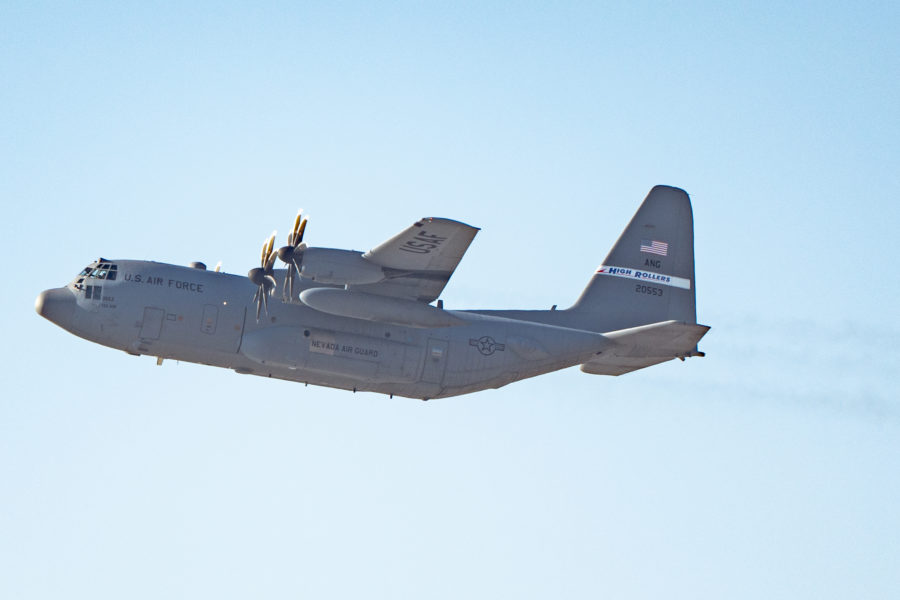The Air Force is exploring the potential of autonomous cargo craft, awarding a contract to tech company Reliable Robotics to study the feasibility of automating large, multi-engine airlifters.
Reliable Robotics announced the contract Feb. 8, calling itself a “leader in safety-enhancing aircraft automation systems.” The company has worked with the Air Force before under three phases of Small Business Innovation Research contracts with the Air Force Research Laboratory. Those deals, awarded in May 2021, April 2022, and October 2022, saw Reliable Robotics develop and test its autonomous technology on existing Air Force aircraft.
This newest study goes further, exploring autonomy specifically for cargo operations, said retired Maj. Gen. David O’Brien, senior vice president of government solutions at Reliable Robotics.
“We’re looking at just sort of the feasibility,” O’Brien told Air & Space Forces Magazine in an interview. ” What is involved? What does it take? Of the various applications and utilities on an aircraft, which ones are most important to the Air Force in providing autonomy?”
O’Brien, who previously worked in Air Force acquisition both as an Airman and civilian, continued: “Then we’ll talk a little bit about aircraft deployment, how they would use it and in what conditions autonomy would really help serve their mission needs.”
Reliable Robotics is driving toward a future in which cargo aircraft can fly with or without crews, can operate as remotely piloted, minimally manned, or fully crewed, depending on mission. That would reduce manpower requirements and increase flexibility.
“If they had a solution where they could operate their autonomous large aircraft in the same way they operate their fully crewed aircraft, that provides speed advantages, increased tempo advantages, and provides a lot of utility in terms of aircraft usage,” added O’Brien.
Managing increased operational tempos with limited manpower could be crucial to operating at effectively in the Indo-Pacific. Air Mobility Command has pushed the envelope with record-breaking endurance missions and experiments with limited aircrew on some flights.
“The Air Force is definitely focused on being able to generate aircraft, definitely focused on a higher tempo, definitely focused on ways to … surge aircraft in newer ways that provide more opportunity and are less demanding on the operators,” O’Brien noted. “And so autonomy is, I think, a big solution to that.”
Much of the focus on autonomous and remotely-piloted aircraft is in the combat arena, but cargo operations could be a good fit, as well, to reduce capacity gaps. Reliable Robotics brings new elements to that discussion because it’s intended for use with existing aircraft.
“Reliable’s autonomy does not preclude piloted flight once installed. And when it’s installed, it’s installed basically in the walls and the ceiling,” O’Brien said. “So we retain and do not disturb the interior compartment. So that can be continued to be used.”
Optionally-manned aircraft could form a significant part of the Air Force’s future fleet—both the B-21 bomber and Next Generation Air Dominance fighter has been designed with optional manning in mind.
For cargo aircraft, autonomy could prove particularly relevant, thanks to demand from commercial carriers that could accelerate the technological development.
“A lot of the advantages that Reliable is working in its commercial solution for commercial cargo carriers is going to be directly applicable to Air Force operations,” O’Brien said. “And I think that’s why the Air Force is excited about this.”
Reliable is working with the Federal Aviation Administration to earn safety approval for its technology. But the short term need is to deliver a useful feasibility analysis. “We have a series of tests and tasks that we want to … make sure we satisfy for [the Air Force],” O’Brien said. “We will be meeting with them frequently, we will be getting access to aircraft, we will be getting everything we need to do an assessment on what autonomy for a large aircraft looks like.”


